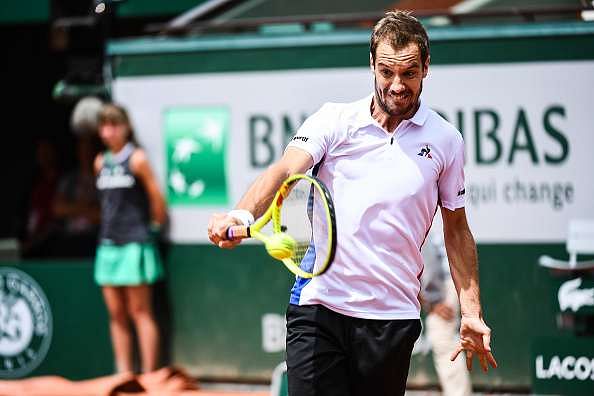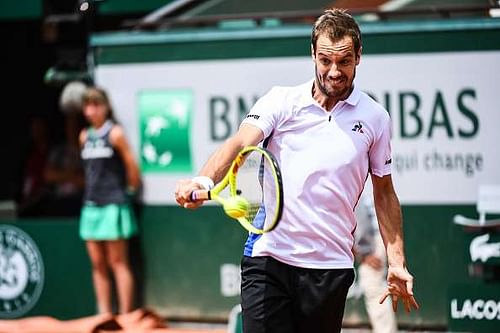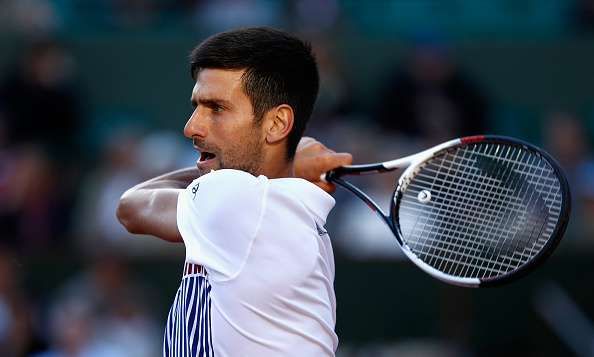
Roland Garros 2017 diary: Kiki's expressiveness makes up for Gasquet's wasted artistry, but what's wrong with Djokovic?
The allotment of courts for the top players at the Slams is always a hot topic of discussion among fans. Is it insulting for a top 4 seed to be scheduled on Court Suzanne Lenglen instead of Philippe-Chatrier? Honestly, I wouldn’t be surprised if the organizers did have that intention; when you have a lot of power, it’s easy to acquire a sadistic streak.
But if we were to look at Roland Garros and Court Suzanne Lenglen specifically, the supposed humiliation of playing in an ‘inferior’ arena is not a factor at all. Suzanne Lenglen provides a remarkably intimate setting for the fans to enjoy – more intimate than any big court I’ve been to. And on the days that Nadal does play here, his game reaches the spectators in a way that it never does on Centre Court.
Unfortunately, I was on Suzanne Lenglen both before and after Nadal’s match today – but not during it. Still, there were a lot of highlights from the day that I feel compelled to share:
What would we do without Richard Gasquet and his one-handed backhand?

Pictures don't do justice to the beauty of the Gasquet backhand. Not even close.
The term ‘poetry in motion’ is used a lot in tennis, particularly in relation to single-handed backhands. And sure, Roger Federer and Stan Wawrinka do possess gorgeous backhands that can inspire reams of prose extolling just how magical they are.
But this was the first time I was seeing the Richard Gasquet backhand on clay, and I can honestly say I was dumbstruck. I mention ‘on clay’ specifically because no other surface gives the Frenchman as much time to unwind as this one.
Wawrinka's backhand acquires more gravitas on the slow surface too, and by all accounts it is the single most aesthetic+effective shot in men's tennis today. But in terms of style points alone, even the Wawrinka backhand pales in comparison to Gasquet's.
The Gasquet backhand is a little ridiculous in its theatricality. The follow-through is so majestic, so elegant, that it looks less like an athlete's motion and more like a painter's brushstroke. It seems completely effortless too; he is never hurried on the shot, and it never looks like he's doing anything other than swatting a fly away. Except that he's doing the swatting with a picture-perfect swish of the hand that makes you weep tears of awe.
Unfortunately for Gasquet though (and for a majority of the crowd, who seemed to be pulling for him in the all-French clash), the beautiful backhand wasn't enough to make him outlast Gael Monfils. Gasquet did well to take the second set after dropping the first in a tiebreaker, but he seemed to be clutching his leg on more than one occasion mid-way through the match.
He eventually retired while trailing 3-4 in the third set, depriving the spectators of what seemed to be shaping into a long and arduous five-setter. But what he didn't deprive the spectators of was their art quota of the day.
Kristina Mladenovic knows how to express her emotions alright
It has been a difficult few months for 2016 Roland Garros champion Garbine Muguruza, to say the least. And she started her match against Kristina Mladenovic ominously, with a double fault. She failed to recover in time to save the first set, much to the delight of the raucously pro-Mladenovic crowd.
Through all the clapping and chanting though, it was easy to see that Muguruza's forehand has gone seriously downhill over the last one year. Her racquet seemed to decelerate every time she got into position to hit a forehand, and even the follow-through was abbreviated – a far cry from the smooth, extended follow-through of her rock-solid backhand. Even the few forehand winners that she did hit seemed to be of the hit-and-pray kind; with little topspin on the shot, she was forced to be tentative off that wing, struggling to contain her power.
It wasn't entirely surprising to see her run around the forehand to hit a backhand on plenty of short balls; her confidence in what should theoretically be a more natural shot for anyone seems low to the point of non-existent. And while that is a problem that many players today face (including, on occasion, the great Serena Williams), there were no such headaches for Mladenovic.

The thoroughly expressive Kristina Mladenovic
The Frenchwoman is not a spectacular shot-maker, but she's a more confident player than most. Not afraid to take the forehand on the rise, Mladenovic frequently changed direction with the shot to surprise Muguruza, and defended particularly well off that wing.
But that still wasn't the biggest contrast between the two players today. What truly set them apart was the way they reacted between points. Muguruza was mostly negative with her body language, choosing to show emotion only when she made a ghastly error or lost a point through a horrible misjudgment. There was little sign of happiness when she won a point, and she barely made a sound when she took the second set 6-3.
By contrast, Kiki celebrated almost every point she win with an exaggerated fist-pump and a dramatic leg-raise. She did grimace occasionally on losing a point, but those were barely discernible next to her passionate screams of joy.
Did the crowd have something to do with Muguruza's stone-faced reactions? They certainly tried their best to unsettle her, celebrating every error she made with yells of “Ki-ki! Ki-Ki! Ki-Ki!”. And if the Spaniard dared to challenge a line call, the whistles flew in thick and fast.
Whatever the reason for her body language, the difficult phase for Muguruza continues – which was made even worse by the fact that she was booed a little as she walked off the court. Clearly, the French don't care much for their defending champions if they are up against one of their own.
The contrasts continued well after the match got over. While Muguruza was being sent off the court with a dismayed look on her face, Mladenovic was showcasing an impressive range of emotions on the other side of the net. Going from adrenaline-charged, to plain happy, to relieved, and ending with tearful, she seemed to be in a bit of a trance as she celebrated her first ever quarterfinal at her home Major.
The crowd responded in kind, resuming the chants of “Ki-ki!” *clap clap clap* “Ki-ki!” *clap clap clap*, before throwing in a bit of football-style “Allez-allez-allez-allez!” cheers. Yeah, it was that kind of day.
Novak Djokovic is still not at his best, but it’s hard to say why

Novak Djokovic
Starting matches slowly has become something of a pattern for the 2017 version of Novak Djokovic. He makes careless errors, doesn’t get enough first serves in, and in general looks like he just got out of bed. Sometimes, like in the Rome final against Alexander Zverev, it costs him big time. On other occasions, like the match against Juan Martin del Potro in Acapulco, he recovers in time to come away with the win.
But today against Albert Ramos-Vinolas, he didn’t make all that terrible a start. He seemed to be dialed-in, hitting the ball crisply and moving well. But he still went down an early break; Ramos-Vinolas was the more aggressive of the two players, and his risks were paying off.
Djokovic ultimately righted the ship and registered a straight sets win. But through most of the match, and especially that first set, he didn’t look like the infinitely superior player that he actually is. There’s just something off about his play lately, but at times it is hard to put your finger on what that is.
He was up 4-0 in the first set tiebreaker, but let the Spaniard claw his way back to 4-4. He missed returns on a few big points. He didn’t finish as many points with winners as he once used to. And he certainly didn’t hit his backhand with as much authority as he is famous for. And yet, at no point did he look like an error-spewing machine, the way he did against Rafael Nadal in Madrid or against David Goffin in Monte Carlo.
A couple of days ago I had said that Murray looks so ill-tempered during his matches because he always knows exactly what he’s doing wrong. The opposite seems to be the case with Djokovic right now; he doesn’t know what he’s doing wrong, so he can’t come up with a way to fix it.
Maybe that’s the reason why he has brought on Andre Agassi as his coach? There’s nothing wrong with Djokovic physically; it’s the intangibles, the lack of that hard-to-describe thing called match readiness, that is making him struggle. Will Agassi be able to identify those intangibles and correct them?
He doesn’t have a lot of time to do that. Nadal seems to be getting stronger with every match, and if the two long-time rivals meet in the semifinal as they are projected to, this version of Djokovic is not going to get the job done.